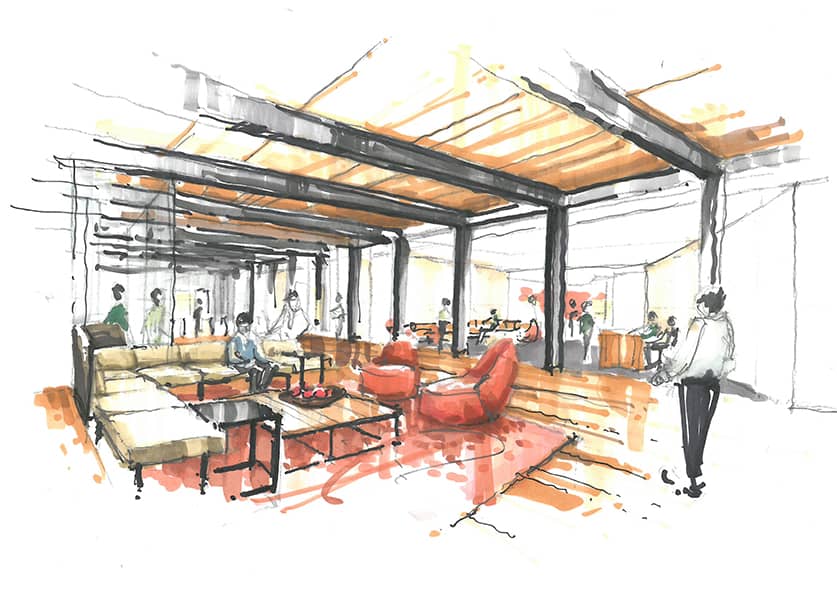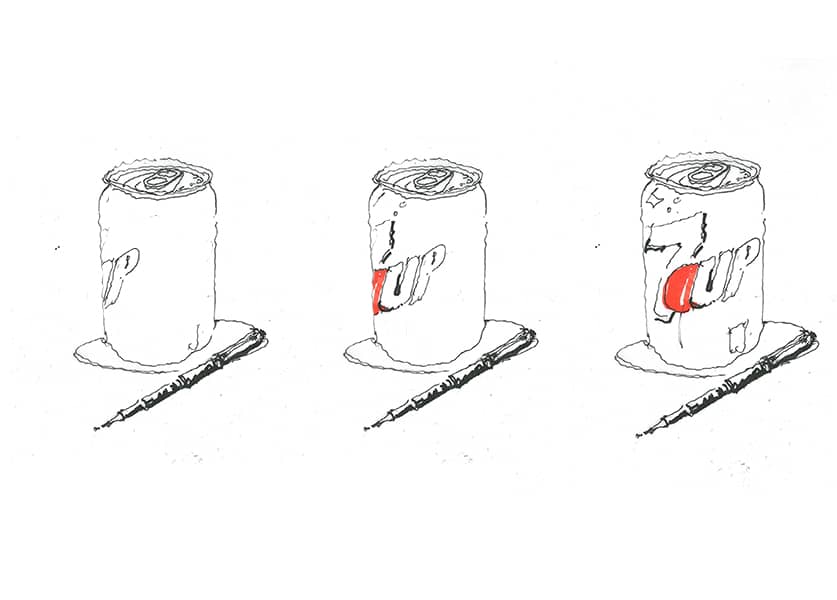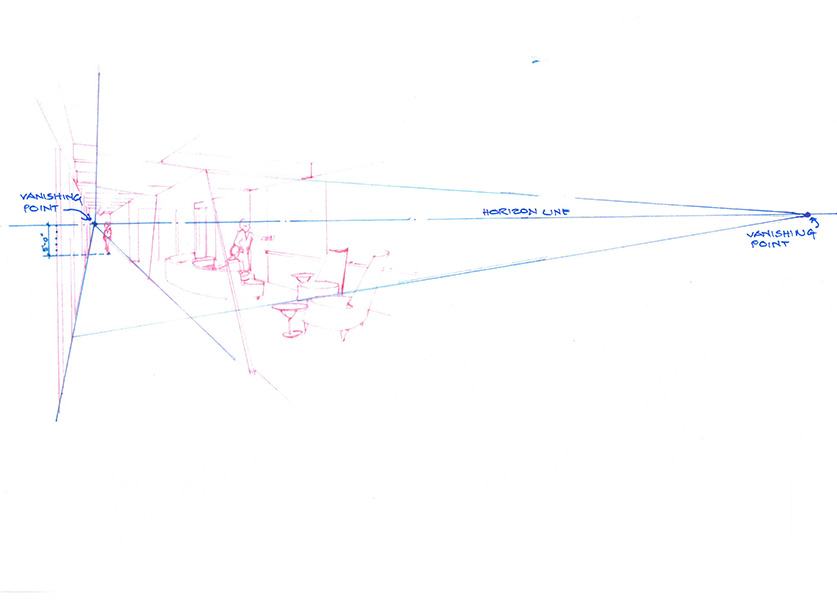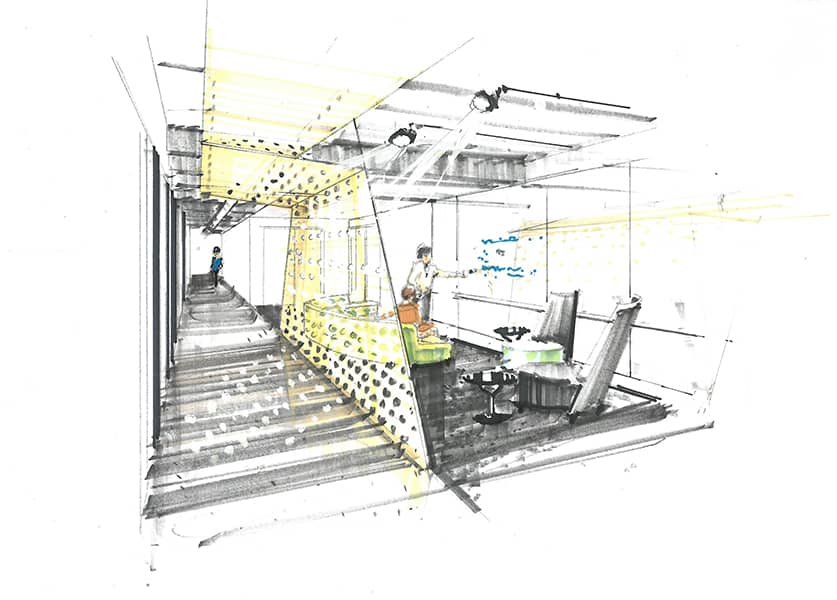Creatively and cerebrally, we love how the language reveals the approach and process of design.

A significant source of pride at IA comes from our adoption and implementation of technical design programs. Digital design is a crucial part of how we communicate our ideas to our clients and partners, and we work constantly to update and upgrade our tools to remain ahead of the curve. But digital design isn’t the only way we share creative ideas. We all communicate through verbal languages, and as designers we also use visual languages; sketching is an active visual language. Hand sketching is very much a crucial part of our design process and like any language—universal or local—we have to practice it daily to maintain those skills.
Sketching as a Language
The sketch itself is a language like any other. If you don’t use it frequently, you’re not as fluid, nor as articulate. The practice of sketching infinitely improves your ability to use it effectively. It’s important as designers to maintain a sketching practice because we constantly convey complex ideas; this is as much a part of our job as designers as creative idea generation. By including sketching in that tool kit, we’re able to communicate complex concepts in a way that is more relatable, and more accurate for a more holistic representation.
Consider the ubiquitous soda can that makes its way to every conference table in every presentation. I can see my side, you can see your side, and our client can see his or her side. Individually, we all have an idea of what this soda can is, but collectively we all see something different. Through sketching, we can assimilate all our view points to help me see what you see, to enrich the design process.

Isn’t sketching an artifact?
Absolutely. But not in an outdated or antiquated way. Sketches are an artifact or example of our work, acting as a placeholder in history. It’s showing a phase of the project and this record is crucial to the progression of our work. We record minutes to capture what was said in client meetings: The sketch supports the meeting minutes, with more conceptual, complex ideas that we can’t file through written words.
Sketching and Creativity
I make it a point to draw something every single day but when I draw, I can’t relay exactly what is in my mind. During the time a message travels from my brain through my synapses and muscles to the pencil in my hand, the image has changed it a little bit. So often, I work fast to get those ideas down on paper, and the result is often something that is looser than a formal drawing. That quality allows for malleability, and gives someone unspoken permission to poke and push and question. The hardline feels complete. The sketch line has possibility.
Our clients can sense that opportunity in a sketched line. They’re not reluctant to tell us if they want changes to a sketch because they don’t feel it’s permanent. Always—in every meeting I’ve ever been in—when you start to draw with a client they engage differently. We understand drawings by default, on almost a primal level, but you don’t have to understand how to draw in order to understand what it is, or what it represents. Our clients may not speak the language like we do, but they can understand. We have to speak and listen—and draw!— at the same levels to communicate effectively.
[twentytwenty]
 [/twentytwenty]
[/twentytwenty]
Play to Solve Problems
Some of the tremendous power of sketching is a way of looking at the world and bringing things together in new ways. Just like music is set chords and notes that are arranged differently to build new songs over time, architecture is the same. We are composing lines and planes in new combinations, but you can’t make those elements coalesce if you don’t play, and if you don’t allow yourself to be playful. You learn about your problem by sketching. You have to frame it in a way that is different from a verbal conversation or represented on the computer. That brings tremendous value to the challenge. The more you understand, the better your solution.